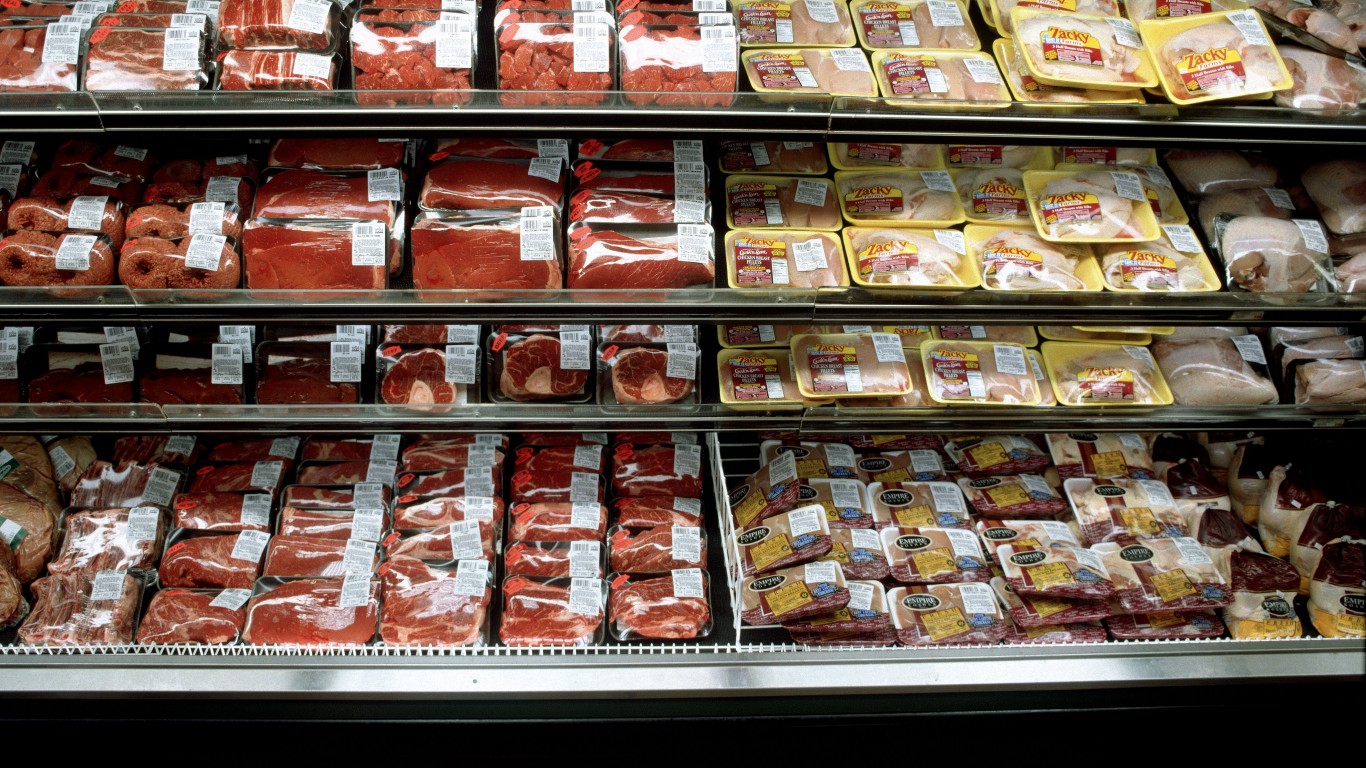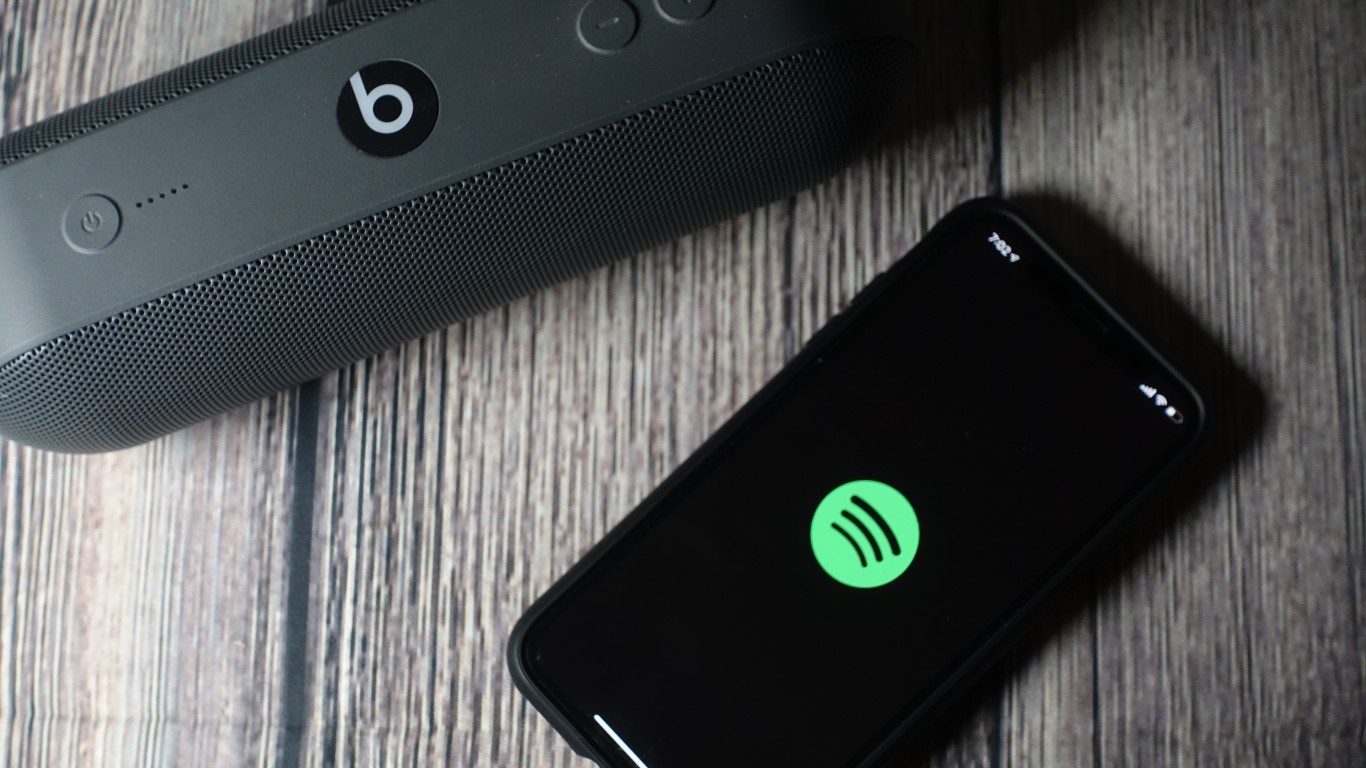Special Report
14 Household Items That Are Actually Getting Cheaper

Published:
Last Updated:

The news about inflation activity during the month of September could hardly have been worse. Despite a drop in the price of gas and oil, the Bureau of Labor Statistics reported that the consumer price index rose by 8.2% year over year. This pace continues to run near a 40-year high. And although the price of a few items included in the index actually fell, these were few and far between. The price of one widely used product plunged – smartphone prices dropped 21%.
Inflation continues to threaten the wider economy. The rise in cost of living has hurt the purchasing power of many Americans. GDP usually slows consumer activity drops. Although unemployment is also near a four decade low at 3.5%, wages have not, for the most part, kept up with inflation. This squeezes the pocketbook of Americans even further. (Here are 50 cities with huge populations living on food stamps.)
The Federal Reserve continues to make an effort to halt price increases. It has aggressively hiked rates throughout the year and will do so longer, well into 2023. Higher interest rates make life more expensive for individual and business borrowers. This, by itself, should slow financial activity. However, so far, the medicine has not provided a cure. (Here are 10 things Americans need to fear about inflation.)
Inflation continues to be fueled by problems with supply chains. Grain is slow to get to market because of logistics and transportation problems. Car parts cannot be sourced in time because some metals are scarce. Sanctions on Russian oil have cut the global supply of crude. Taken together, supply chain troubles for thousands of products have pushed up prices.
Smartphones are an odd exception to the increase in prices. Components for smartphones have become scarce in many instances. Some critical parts come from part of China hit by the COVID-19 lockdown there. However, the smartphone business is also highly competitive. As the major U.S. carriers — AT&T, Verizon, and T-Mobile — compete to move customers to new 5G wireless systems, incentives have become part of the customers’ conquest game.
To determine the 13 household items that are falling in price, 24/7 Wall St. reviewed the BLS’ Consumer Price Index Summary September report. Prices are compared to September 2021.
Click here to see 14 household items that are actually getting cheaper.

14. Internet services and electronic information providers
> Price change, September 2021 to September 2022: -0.1%
[in-text-ad]

13. Tenants’ and household insurance
> Price change, September 2021 to September 2022: -0.3%
12. Tomatoes
> Price change, September 2021 to September 2022: -1.0%

11. Wireless telephone services
> Price change, September 2021 to September 2022: -1.1%
[in-text-ad-2]

10. Recorded music and music subscriptions
> Price change, September 2021 to September 2022: -1.2%

9. Car and truck rental
> Price change, September 2021 to September 2022: -1.4%
[in-text-ad]

8. Uncooked beef roasts
> Price change, September 2021 to September 2022: -2.8%

7. Computers, peripherals, and smart home assistants
> Price change, September 2021 to September 2022: -3.6%

6. Ship fare
> Price change, September 2021 to September 2022: -3.7%
[in-text-ad-2]

5. Uncooked beef steaks
> Price change, September 2021 to September 2022: -4.8%

4. Education and communication commodities
> Price change, September 2021 to September 2022: -8.3%
[in-text-ad]

3. Telephone hardware, calculators, and other consumer information items
> Price change, September 2021 to September 2022: -16.6%

2. Televisions
> Price change, September 2021 to September 2022: -17.9%

1. Smartphones
> Price change, September 2021 to September 2022: -21.0%
The average American spends $17,274 on debit cards a year, and it’s a HUGE mistake. First, debit cards don’t have the same fraud protections as credit cards. Once your money is gone, it’s gone. But more importantly you can actually get something back from this spending every time you swipe.
Issuers are handing out wild bonuses right now. With some you can earn up to 5% back on every purchase. That’s like getting a 5% discount on everything you buy!
Our top pick is kind of hard to imagine. Not only does it pay up to 5% back, it also includes a $200 cash back reward in the first six months, a 0% intro APR, and…. $0 annual fee. It’s quite literally free money for any one that uses a card regularly. Click here to learn more!
Flywheel Publishing has partnered with CardRatings to provide coverage of credit card products. Flywheel Publishing and CardRatings may receive a commission from card issuers.
Thank you for reading! Have some feedback for us?
Contact the 24/7 Wall St. editorial team.